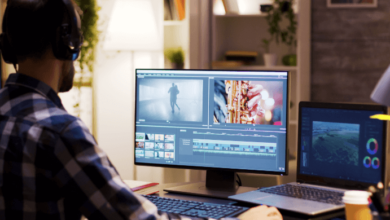The Best Tools for Creating Dynamic Motion Graphics

In the realm of motion graphics, the selection of the right tools can significantly influence both the creative process and the final outcome. Various software options cater to a spectrum of skill levels, from intuitive platforms for novices to sophisticated applications that challenge experienced professionals. Understanding the strengths and weaknesses of each tool is crucial, as is recognizing the essential features that can enhance workflow and creativity. As we explore these varying options, one question remains: what truly defines the best choice for your specific needs?
Top Software for Beginners
In the world of dynamic motion graphics, the right software can be the catalyst that transforms a novice’s vision into a captivating visual narrative.
Solutions featuring user-friendly interfaces and intuitive controls empower beginners to easily navigate complex projects.
With these tools, creativity flows uninhibited, allowing users to explore their artistic potential while mastering fundamental techniques that lay the foundation for future endeavors.
Advanced Tools for Professionals
While beginners benefit from user-friendly software, professionals require advanced tools that offer greater depth and flexibility to elevate their motion graphics projects.
Solutions featuring 3D animation and VFX integration enable stunning visuals, while real-time rendering enhances efficiency.
With scripting capabilities and customizable templates, artists can create unique designs.
Collaborative workflows ensure seamless teamwork, empowering professionals to unleash their creativity and push boundaries.
Essential Features to Consider
When selecting dynamic motion graphics tools, several essential features warrant careful consideration to ensure they meet the demands of professional projects.
Key features such as customizable templates, robust animation capabilities, and seamless integration with other software enhance creativity.
Additionally, an intuitive user interface is crucial for efficient workflow, allowing artists to focus on their vision while navigating complex tasks with ease and flexibility.
Comparison of Popular Tools
As professionals dive into the world of dynamic motion graphics, comparing popular tools becomes essential for making informed decisions.
Adobe After Effects excels in intricate motion graphics and video editing, delivering precision and flexibility.
Conversely, Blender Animation offers a powerful, open-source alternative, ideal for those seeking freedom in creativity.
Each tool presents unique capabilities, catering to diverse artistic visions and technical requirements.
Tips for Choosing the Right Tool
Selecting the right motion graphics tool can significantly impact both the creative process and the final product.
Prioritize user experience, ensuring the interface feels intuitive and inspires creativity.
Consider tools that enhance project collaboration, allowing seamless teamwork and idea exchange.
Evaluate features that support your unique vision, enabling artistic freedom while streamlining workflows.
Ultimately, choose a tool that resonates with your style and enhances your creative journey.
Conclusion
In a world where creativity flourishes, the search for the “perfect” motion graphics tool often leads to a paradox: the more options available, the more elusive the ideal choice becomes. While beginners may revel in user-friendly interfaces, professionals may find themselves entangled in the complexity of advanced features. Ultimately, the quest for the ultimate software may reveal that the true artistry lies not in the tools themselves, but in the visionary minds that wield them.





